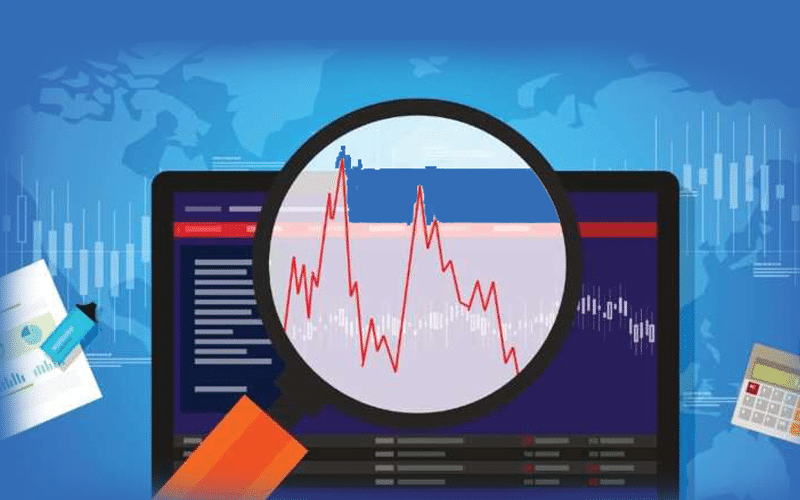Why know how to value a stock?
The stock markets historically have been generating the highest rate of return compared to other kinds of investments. Over the long-term investors can expect 7-10% returns annually.
One of the key-skills to invest successfully is to be able to assess what stocks have more growth and income-generating opportunities objectively. In other words – to know how to value a stock.
Stock valuation is the method of finding the value of a stock. The problem here is that the notion of the “value” is subjective. Some people may base their perception of the stock’s value on the opinions of other people. Others may see the value of a stock in its business idea or technology. There are countless ways to perceive value.
If you want to invest, you must keep in mind that stock prices rarely represent their exact value. And that’s where stock valuation skills come in place – when we want to find a “good deal” by buying a stock at the price that’s below its true value.
How do you value a company stock?
Let’s find out how we can get the idea about the value of a company. There are two main valuation approaches – Absolute Valuation and Relative Valuation.
Absolute valuation attempts to find the intrinsic value of a stock, regardless of what’s going on in the rest of the market. The intrinsic value is the notion that something or someone has value independently from outside factors. For example, human life has the highest value regardless of nationality, race, political or economic system etc.
It’s called “absolute” because we use the metrics that are absolute to get the idea about the value of a stock. We consider metrics of a single company such as dividends, cash flow, growth rate and others.
To get these metrics, you will need to go through the reports of the company, its balance sheet, or even look into the estimates of professional analysts (be careful with that).
For example, you can find the data of The Coca-Cola company by going to their website www.coca-colacompany.com and clicking on the “investors”, and there you’ll see all the data you need.
Relative valuation compares the metrics of a particular company to its competitors. We can then derive the value of the company by looking at how different its metrics are from the rest of the similar companies.
The most common metrics that we can use for such comparison are Price-to-Earnings ratio (P/E), Price-to-book ratio (P/B), Price-to-cash-flow ratio (P/CF). As you see, these are all ratios, which reminds us of the relative nature of this approach.
In general, Relative valuation is more prevalent among investors. Partially because there is easier access to the metrics of the Relative Valuation and the concept is more comfortable to grasp. The websites such as finviz.com, marketsmith.investors.com, finance.yahoo.com can help you to get all the data you need. Some of them even offer this data for free, like finviz.com.
DCF Analysis and Comparable analysis: the most popular valuation methods
Each valuation approach has different models as to what metrics, in particular, to look at and based on what principles.
Discounted Cash Flow Model (DCF) belongs to the Absolute valuation approach. We want to use this model if the dividend data is not objective, so we can’t derive the value of the company from it. Even for the companies that do pay dividends, we still can use this model to confirm the estimate of value from another perspective.
In this model, we use the Free Cash Flow data (roughly all company’s earned cash that’s left after all expenses) of a company to estimate the intrinsic value. The most important here is to see the positive and predictable Free Cash Flow. This requirement eliminates many small, non-mature companies, that typically reinvest the majority of their income back in their business to promote future growth. Many of such companies belong to biotechnology and technology sectors.
On the contrary, the companies that fit the DCF valuation model are typically blue chips. These mature companies have already passed the growth stages and can consistently generate Free Cash Flow. Many of them eventually focus more on cutting costs of their business, for example, by outsourcing the production to the countries with the lower cost of labor.
Comparable analysis as a part of the Relative valuation approach is generally easier to conduct. The idea behind this kind of research is to compare the stock’s ratios to the market benchmark. Price-to-Earnings (P/E) ratio is one of the most common ratios that is used to estimate the value of a stock.
Let’s say you want to invest in XYZ stock. You see that its P/E ratio is 10, while the average P/E of its industry is 20. Therefore, judging by this criterion, the XYZ stock is undervalued.
P/E ratio is available for any company listed on the Exchange. Make sure that the P/E is positive and the earnings are not too volatile. Otherwise, P/E is meaningless.
The stock market offers tremendous opportunities to multiply your money. To invest successfully, you need the method that you understand best and fits the kind of companies you aim to bet on. Each method has its pros and cons as there is no perfect way to value companies.








